This is the best article we have seen on the topic for quite some time
About Mongabay
- Legalization of cannabis for medicinal and recreational use is an expanding global trend in the U.S. and globally, while the illicit market continues to feed large swaths of demand.
- Both the legal and illegal markets are linked to environmental challenges such as freshwater use, land-use change, toxic and nutrient pollution, and climate change-contributing CO2 emissions.
- Emerging legal cannabis businesses in the U.S. are subject to strict regulation, but many operate in ways that can contribute to environmental harms.
- While the scope of damage from booming legal growing operations is now being better assessed, the impacts of illicit clandestine operations remain mostly undetermined.
Cannabis, marijuana, pot, bud, grass or herb — no matter its nickname, this go-to drug has long been associated with the essence of “green” and connected to eco-friendly movements. Yet, as legalization for medicinal and recreational use gathers pace globally, concerns are rising over the environmental impacts of this nascent industry as it emerges from the shadows of its illicit past.
Both sides of the cannabis business — the legal and illegal markets — are responsible for environmental damage to varying degrees, experts say, potentially contributing to pressures on Earth’s “safe operating space.” Among the concerns are the impacts on freshwater supplies, threats to biodiversity, changes in land use, and potentially vast emissions of CO2, adding to ever-worsening climate change.

A growing trend
Cannabis is the world’s drug of choice, consumed by an estimated 200 million people annually, according to the United Nations Office on Drugs and Crime (UNODC). A growing number of countries worldwide have passed legislation legalizing its use.
In the U.S., 18 states have legalized cannabis for adult use and 38 for medical use. Malta became the first European country to fully legalize it, and Germany may soon follow suit, with potential ripple effects across the European Union.
This “green rush” is a boon for economies. In the U.S., legal cannabis is expected to generate as much as $43 billion by 2025. Meanwhile, U.S. illegal cultivation continues feeding large swaths of demand to the tune of $65 billion in 2020. With legalization, analyzing environmental impacts is becoming easier as compared to tracking the effects of the clandestine illicit trade.
Many of the environmental harms from cannabis production can be traced to law enforcement policy and the marijuana plant’s historic status as a prohibited crop, according to Anthony Silvaggio, an environmental sociologist at Humboldt State University. In California, for example, enforcement and eradication efforts drove growers deeper into remote, ecologically sensitive areas. “Prohibition, in a sense, incentivizes these sorts of bad actors and these bad practices,” he says.
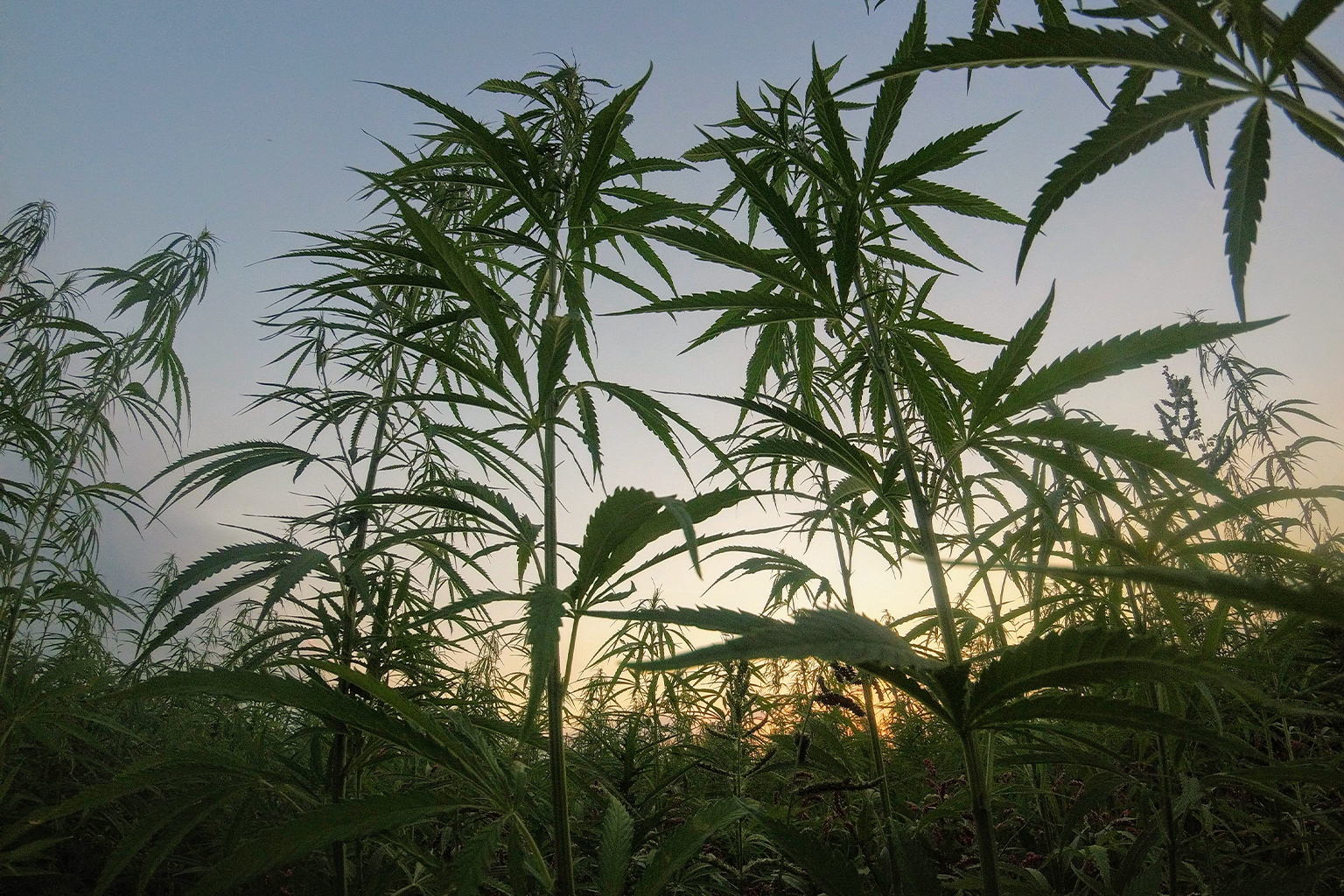
More recently, Silvaggio points to the controversy surrounding the passage in 2016 of California’s Proposition 64, which legalized cultivation and use by adults in the state, as an example of how legislation helps foster unintentional environmental consequences. “Many folks heralded this legislation, both activists and policymakers, as the environmental gold standard [especially because] it allocated funding to conservation, to restoration, and also the enforcement of environmental laws.”
However, the controversial abrupt removal of a 1-acre (0.4-hectare) limit on legal farm sizes written into Proposition 64 led to a “green rush,” encouraging large-scale growers at the expense of small farmers.
This removal, coupled with barriers to acquiring permits and entering the legal market in California have also caused a boom in unpermitted cultivation, leading to unintended environmental consequences such as water diversions and pesticide use. Today, by some accounts, only around 20% of California’s cannabis farms are permitted. Market complexities make it challenging to parse out the potential harm from the legal industry, unpermitted growers, and larger-scale criminal operations.
The clandestine nature of much of the industry makes monitoring and regulation difficult, but “If they’re in the illicit market because they’re small farms or legacy growers, or in the [Black, Indigenous and people of color] community, who just haven’t had the opportunity [to become permitted], I think their cultivation practices can be the same, if not better [environmentally], than the legal market,” says Jacob Policzer, director of science and strategy at the Cannabis Conservancy, a cannabis farm certification body.

A thirsty crop?
Overuse of freshwater is a looming global crisis, with scientists declaring the planetary boundary for freshwater change transgressed in April 2022. Unsustainable pressure on supplies and shaky regulation and governance, coupled with seriously deepening drought conditions in some places due to climate change, along with drastic land-use change, have heightened the global water supply problem.
In the Western United States, for example, cannabis production has come in for much criticism as the latest threat to this precious commodity, perhaps unfairly. In California, agriculture accounts for as much as 80% of freshwater use, but “the demand represented by [legal] cannabis is a fraction of 1%,” says Ted Grantham, co-director of the Cannabis Research Center at the University of California, Berkeley. “The reason for that is that the actual footprint, the area that cannabis occupies, is [currently] very small.”
Grantham and his team conducted research on permitted cannabis farms in California to estimate overall water demands. Previous estimates of 6 gallons (27 liters) per plant per day are probably too high, he says; instead that figure likely represents peak water use at the height of the growing season. “A back-of-the-envelope calculation is that [legal cannabis] uses about the same amount of [water as] tomatoes,” Grantham reveals.
Critics counter that, while cannabis production is perhaps a small consumer of water, the potential for harm is still present. “It’s all about the location where it’s grown, and the fact that it tends to be grown in water-limited environments,” Grantham explains.
As a legacy of the illegal market, cannabis growers are often found in remote areas, putting stress on rural water supplies. Cannabis cultivation also tends to “cluster” in various locales, while specific practices, such as the use of wells that can help draw down aquifers, contribute to overuse of water supplies. Water diversions and well use by legal and illegal growers can even lead to severe depletion of watercourses in some cases, particularly during summer months when agricultural demand is at its peak.
“What we’ve learned in the last few years is that in most counties in California, it’s 75% or more of the legal cannabis growers [who] are actually using groundwater wells, rather than surface water diversions,” but even that aquifer use can impact streamflow depending on well location, explains Jen Carah, a senior scientist focused on cannabis cultivation at The Nature Conservancy.
It’s thought that the majority of unpermitted farms follow similar practices, though that can’t be said with certainty.

An additive water issue
Carah emphasizes that cannabis is not the primary drain on freshwater in California, as is often claimed. A previous study by Carah and others found that in Northern California’s Navarro River watershed, 73% of cannabis cultivation sites and 93% of residential houses relied on groundwater. Streamflow depletion caused by residential use was five times higher than that due to cannabis cultivation, the study found.
“We’re dealing with additive issues here,” Carah explains. “Every additional use is important to consider and has incremental negative impacts. But is [cannabis] the biggest [water] issue in California? No.”
But in states such as California, which have battled worsening drought conditions, pushed deeper into the red by intensifying climate change, every drop of water matters. Projections are that extreme droughts in California are only going to worsen, becoming longer, and stressing water supplies even further. “[D]ata from California indicate that in the absence of regulation, cannabis irrigation could significantly exacerbate water stresses in drought-prone regions,” reads a review published last year.
“During these drought periods, when … stream flows are very low, or we start to see streams drying, even small withdrawals from the environment can really accelerate the drying of those systems,” says Grantham. “Certainly, in drought years those impacts are likely to be greater.”
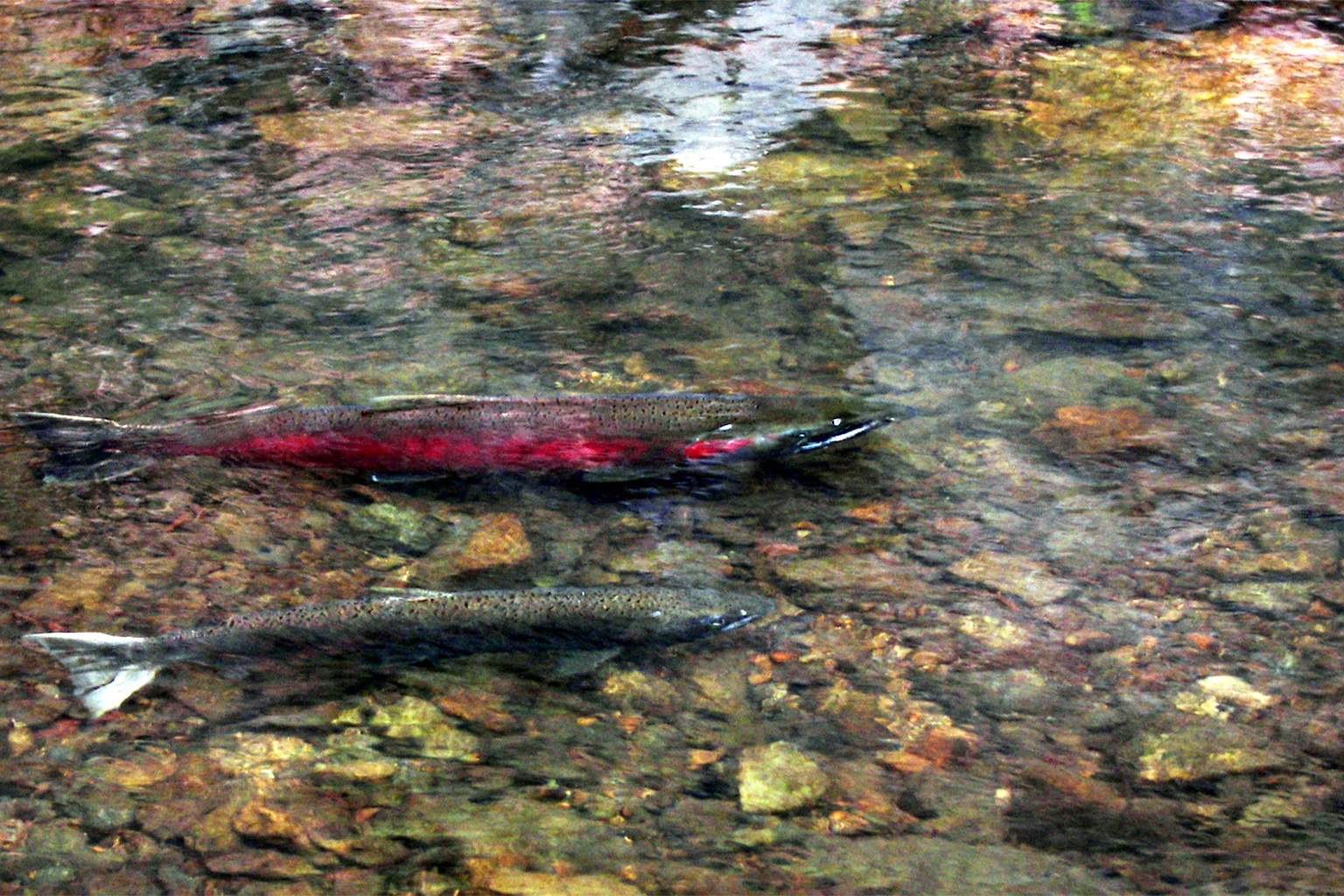
Water diversions and theft, mostly by illicit growers, are frequently cited as an additional pervasive issue in many drought-stricken states, including California, Oregon and Nevada. In the latter, there are an estimated 3,500 to 4,000 unpermitted cannabis growers. A recent report by the Illinois Valley Soil and Water Conservation District estimated that unlicensed growers were responsible for using 414 million gallons (1.88 billion liters) of water in the Illinois Valley in 2021.
Meanwhile, California and other states continue contending with pervasive illegal growers on public land. “We know these sites are essentially stealing billions of gallons of water each year to irrigate their plants,” states Greta Wengert, executive director of the Integral Ecology Research Center. “Not only is it a water theft or water diversion issue, but it’s basically stealing water from the public and wildlife.”
Though this public lands issue has been studied more extensively in California, it’s by no means isolated to this state, says Mourad Gabriel, a wildlife biologist with the U.S. Department of Agriculture’s Forest Service; it’s clearly a national issue. Illegal growers are also linked to pollution of water sources through the use of pesticides, insecticides and fertilizers.
“We’re talking water [slated] for reservoirs or municipalities. We’re talking about water that is utilized for Indigenous tribes, in salmon runs, and we’re also talking about water for recreation,” says Gabriel.

Hotboxing a climate planetary boundary
Globally, cannabis demand is mostly fed by crops grown outdoors, according to the UNODC. However, indoor cultivation still accounts for a large portion of production, particularly in Europe and North America.
Reliance of indoor growers on fossil-fuel energy sources and added pressure on electricity grids are the main environmental concerns for Gina Warren, co-director of the Environment, Energy & Natural Resources Center at the University of Houston. In fact, state regulations limiting outdoor growing operations in the U.S. were instituted primarily due to the proliferation of energy-guzzling indoor facilities, Warren says, pointing to a study published in 2021.
Another paper published last year shows that geographic location of growing operations dictates carbon emissions, with figures ranging from 2,283 to 5,184 kilograms of C02 released per kilo of dried flower. In Colorado, it’s estimated that cannabis production accounts for 1.3% of the state’s emissions, not far off those emitted by coal mining, says Jason Quinn, associate professor at Colorado State University, one of the study authors.
But efforts are being made within the legal industry to minimize energy use. “Some [indoor cultivators] have really gone above and beyond to move to onsite power production,” says Sam Mills, at the Climate Resources Group. Some solutions include switching to energy-efficient LED lighting and generating power via renewable sources.

Others, however, question whether such measures will ever be sufficient to limit the climate impact of indoor growing. “There is tunnel vision around energy efficiency, which results in the pursuit of incrementalistic reductions to ‘optimize’ energy use, without comparing indoor and outdoor environmental footprints,” Evan Mills, the principal at Energy Associates, told Mongabay via email.
When it comes to the illegal market, accurately assessing energy and climate impacts is challenging. Quinn says, however, those effects could potentially become far worse. Across the Atlantic, in the U.K., large-scale illegal growers have been linked to power outages in some cases.
What indoor cannabis production represents is an as-yet-unquantified global source of greenhouse gas emissions. As with water use, this is an additive issue. A recent report by the U.N. Intergovernmental Panel on Climate Change noted that time is fast running out to lessen the worst climate change impacts. Reining in emissions from a rapidly expanding legal cannabis industry, while also curtailing illegal production, could help in achieving that goal — though by precisely how much is unknown.

Impacts on the land
High and escalating demand for cannabis is known to be driving land-use change and contributing to biodiversity loss. In Paraguay, illegal cultivation has been linked to the devastation of the Atlantic Forest biome, a forested area that has been dramatically reduced to only a quarter of its original size. In Madagascar, the country’s Tsaratanana Reserve has long battled with illegal cannabis cultivation, undermining governance of the park and threatening its unique biodiversity. Other countries, such as Honduras, are facing growing illegal production in remote areas, led by criminal groups.
California research has shed light on the impact of growing operations that trespass and encroach on wildlife. A chief concern is the use by growers of anti-coagulant rodenticides, says Gabriel, who has studied the issue for more than a decade. Species such as the Pacific fisher (Martes pennanti) are riddled with these chemicals, he says. Around 80% have been found to contain them. Further research has shown species such as the endangered northern spotted owl (Strix occidentalis caurina) and barred owl (Strix varia) are also affected.
The immediate impact of a growing site — land clearing, wildlife disturbance, water supply diversion, and chemical use — is just one aspect of a complex environmental problem, while the long-term consequences of pollution and habitat degradation remain to be analyzed. “We now have the preliminary data that’s demonstrating native vegetation is sequestering the [cannabis-growing] pesticides into its material at these cultivation sites,” Gabriel explains.
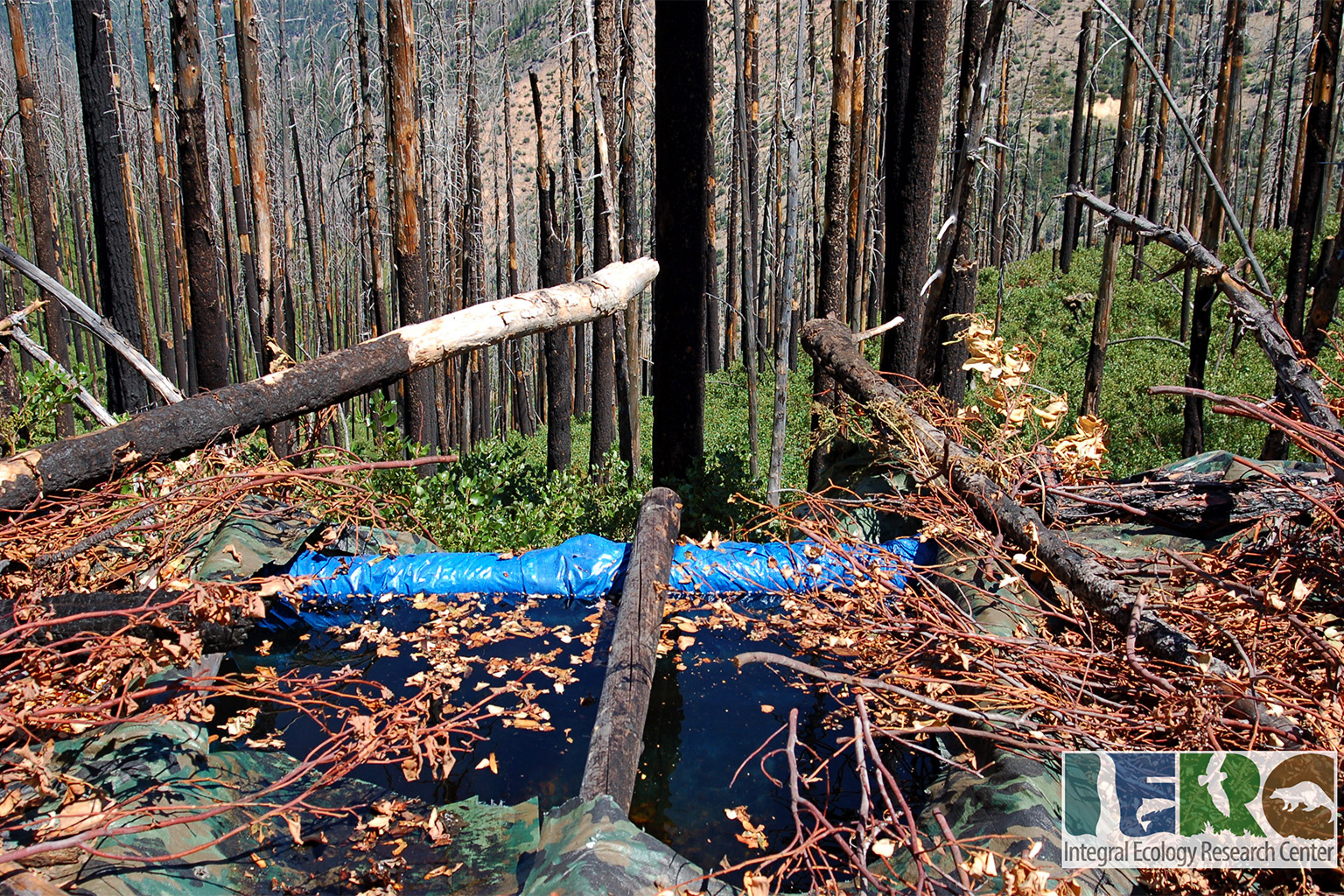
Away from public lands, the tendency to grow on private land in remote areas is a biodiversity concern. A study in 2018 investigated the expansion of cannabis cultivation in Northern California, noting that between 2012 and 2016, cultivation boomed by 58%, with 80-116% increases in cultivation near ecologically sensitive areas.
How exactly this is impacting wildlife is still to be determined, says Phoebe Parker-Shames, a graduate researcher at UC Berkeley. Research in southern Oregon on predominantly unpermitted farms found a slight overlap with habitat for wildlife including salmon and fishers. “But overlap doesn’t necessarily mean that harm occurs,” Parker-Shames, cautions.
“It’s going be different depending on the kind of farm. On some farms they probably can be providing actual habitat for wildlife,” she adds. On others, however, exposure to pesticides and fertilizers and poaching are risks when overlap occurs. “So, it ends up being really a case-by-case as to whether it’s good news, or bad news for wildlife.”
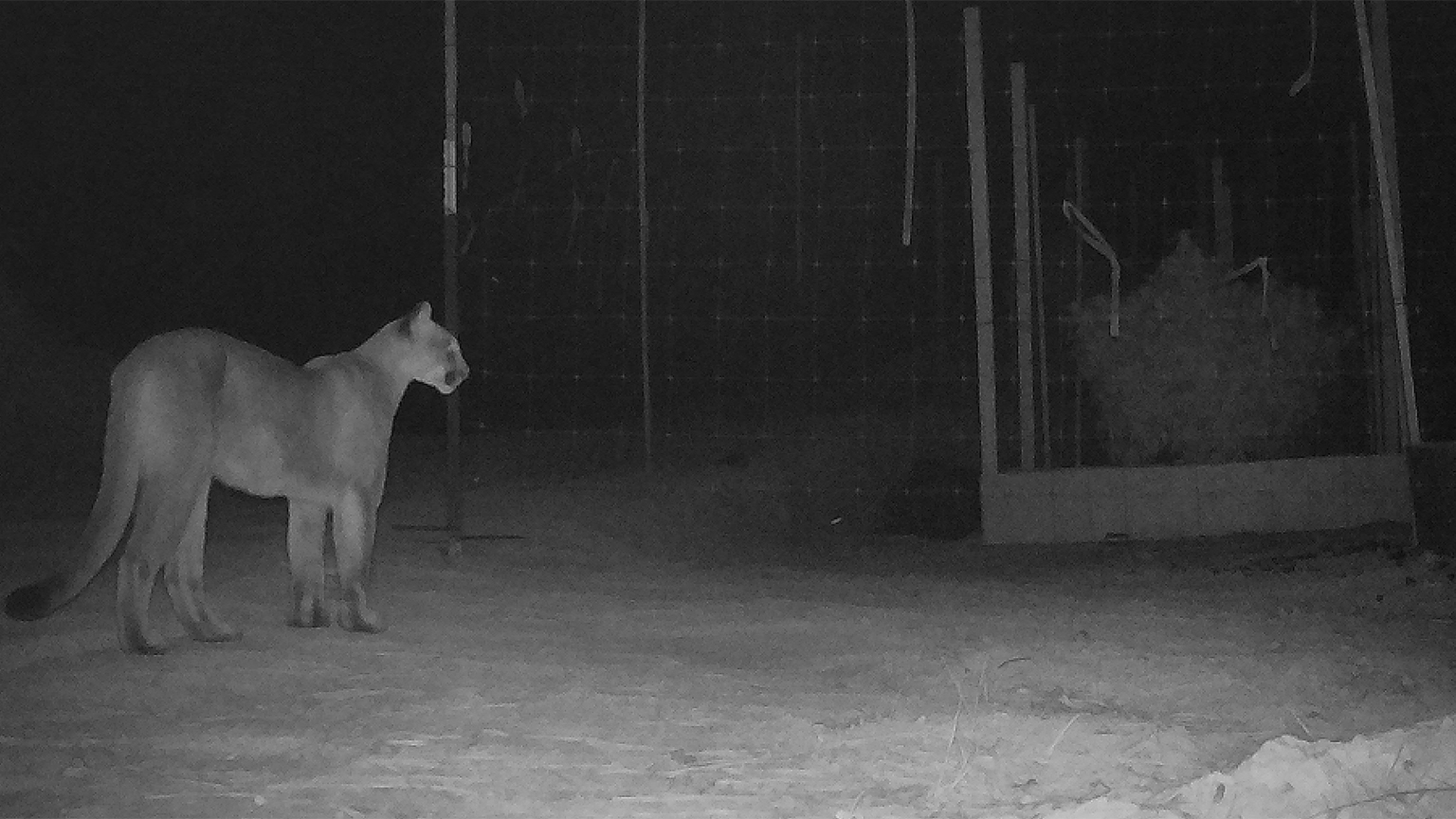
Greening the green?
Most experts Mongabay spoke to say that an opportunity still exists to shape a legal cannabis industry that minimizes environmental harm. In fact, some within the industry are already adapting, says Policzer, with a push toward sustainability driven mainly by cultivators themselves.
Other issues such as air pollution, a heavy reliance on plastic within the legal industry, nutrient emissions from nitrogen and phosphorous fertilizer use, and questions over the potential environmental impact of cannabis metabolites in wastewater compound these challenges. An ever-present unseen illegal market complicates matters further.
Limiting the worst impacts of cannabis cultivation is something that will come down to well-crafted policy, says Silvaggio. “Indoor production for recreation should be prohibited [due to energy use]. We don’t need it, it should all be outdoor; the only indoor production should be for scientific-medical purposes,” he argues.
Parker-Shames contends that environmentally friendly marijuana is a question of what fits each locality. “I don’t think we can paint all cannabis production with one broad brush in terms of what the environmental impacts are,” she says. “Instead, we need to shift to talking about land-use decision-making and trade-offs.” In some places, she says, indoor cannabis cultivation may be preferred if it means reducing impacts on wildlife, for instance.
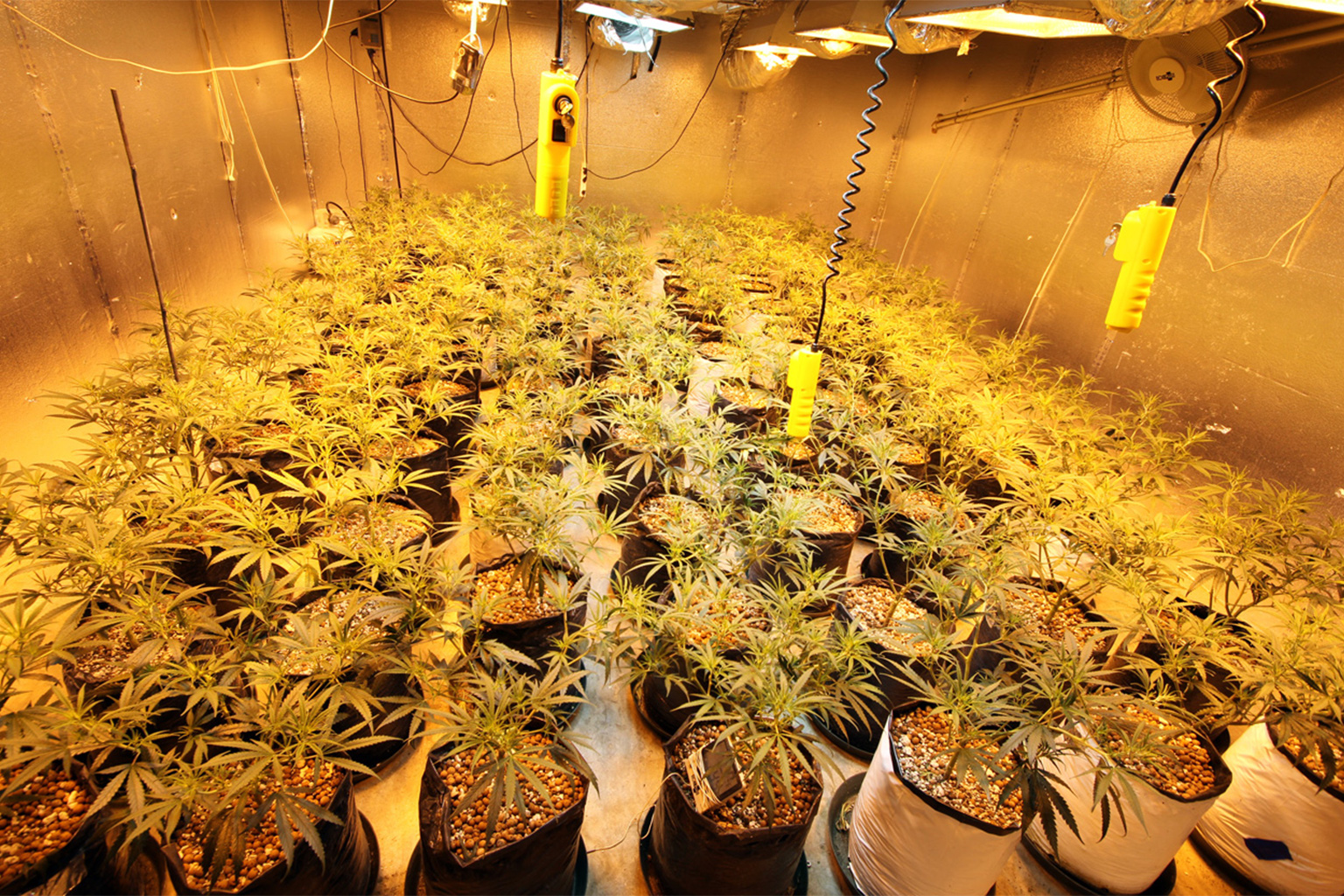
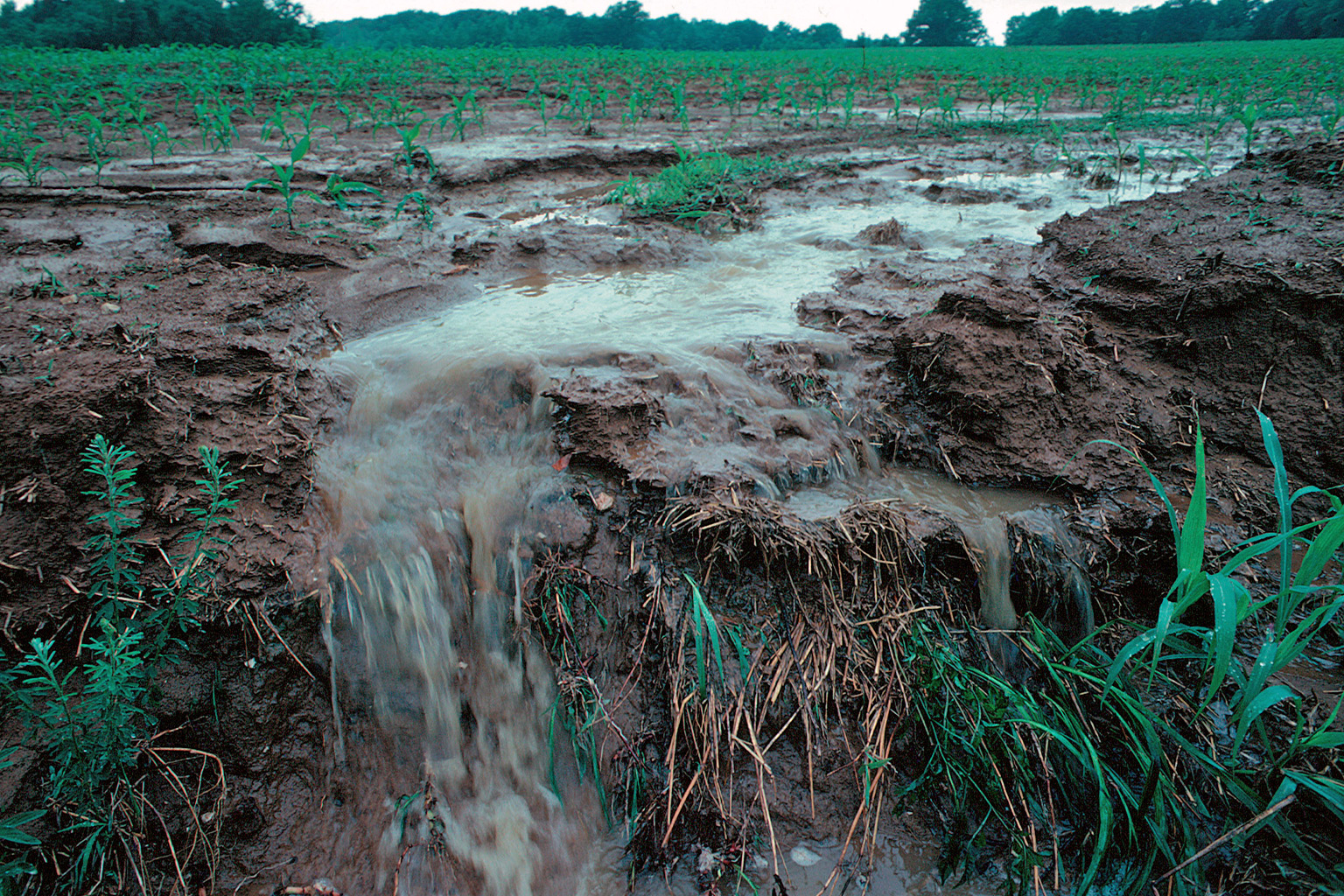
When it comes to water, the California Water Board’s tracking and use reporting requirements for permitted cannabis cultivators may represent “the next generation of water management,” says Grantham. In times of drought, cannabis users are the first in line to have their rights rescinded, he observes. “If [similar parameters] were extended to all the water uses in the state, it would really help us improve the way we both account for, and then by extension, manage this resource.” Enabling the vast number of unpermitted growers to enter into the fold of compliance, however, remains a challenge.
Debates on these and other issues will continue as legal cannabis markets emerge globally and as growers emerge from the illicit shadows and try to navigate the environmental pitfalls of large-scale legal production.
Banner image: Drying farmed cannabis. Image by Terre di Cannabis via Unsplash.
Citations:
Silvaggio, A. (2021). The environmental impact of cannabis liberalization. The Routledge Handbook of Post-Prohibition Cannabis Research. Retrieved from https://www.taylorfrancis.com/chapters/edit/10.4324/9780429320491-24/environmental-impact-cannabis-liberalization-anthony-silvaggio
Dillis, C., Butsic, V., Carah, J., Zipper, S. C., & Grantham, T. (2021). Cannabis Farms in California rely on wells outside of regulated groundwater basins. Environmental Research Communications, 3(7), 075005. doi:10.1088/2515-7620/ac1124
Zipper, S. C., Carah, J. K., Dillis, C., Gleeson, T., Kerr, B., Rohde, M. M., . . . Zimmerman, J. K. (2019). Cannabis and residential groundwater pumping impacts on streamflow and ecosystems in Northern California. Environmental Research Communications, 1(12), 125005. doi:10.1088/2515-7620/ab534d
Wartenberg, A. C., Holden, P. A., Bodwitch, H., Parker-Shames, P., Novotny, T., Harmon, T. C., … Butsic, V. (2021). Cannabis and the environment: What science tells us and what we still need to know. Environmental Science & Technology Letters, 8(2), 98-107. doi:10.1021/acs.estlett.0c00844
Warren, G. (2021). Hotboxing the polar bear: The energy and climate impacts of indoor marijuana cultivation. Boston University Law Review, 101. doi:10.2139/ssrn.3765578
Summers, H. M., Sproul, E., & Quinn, J. C. (2021). The greenhouse gas emissions of indoor cannabis production in the United States. Nature Sustainability, 4(7), 644-650. doi:10.1038/s41893-021-00691-w
Rafanoharana, S. C., Andrianambinina, F. O., Rasamuel, H. A., Rakotoarijaona, M. A., Ganzhorn, J. U., Waeber, P. O., & Wilmé, L. (2021). Exemplifying stratified deforestation in four protected areas in Madagascar. Forests, 12(9), 1143. doi:10.3390/f12091143
Franklin, A. B., Carlson, P. C., Rex, A., Rockweit, J. T., Garza, D., Culhane, E., … Horak, K. E. (2018). Grass is not always greener: Rodenticide exposure of a threatened species near marijuana growing operations. BMC Research Notes, 11, 94. doi:10.1186/s13104-018-3206-z
Gabriel, M. W., Woods, L. W., Poppenga, R., Sweitzer, R. A., Thompson, C., Matthews, S. M., … Clifford, D. L. (2012). Anticoagulant rodenticides on our public and community lands: Spatial distribution of exposure and poisoning of a rare forest carnivore. PLOS ONE, 7(7), e40163. doi:10.1371/journal.pone.0040163
Gabriel, M. W., Diller, L. V., Dumbacher, J. P., Wengert, G. M., Higley, J. M., Poppenga, R. H., & Mendia, S. (2018). Exposure to rodenticides in northern spotted and barred owls on remote forest lands in northwestern California: Evidence of food web contamination. Avian Conservation and Ecology, 13(1), 2. doi:10.5751/ace-01134-130102
Butsic, V., Carah, J. K., Baumann, M., Stephens, C., & Brenner, J. C. (2018). The emergence of cannabis agriculture frontiers as environmental threats. Environmental Research Letters, 13(12), 124017. doi:10.1088/1748-9326/aaeade
Parker-Shames, P., Choi, C., Butsic, V., Green, D., Barry, B., Moriarty, K., … Brashares, J. S. (2022). The spatial overlap of small-scale cannabis farms with aquatic and terrestrial biodiversity. Conservation Science and Practice, 4(2), e602. doi:10.1111/csp2.602
Kennedy, E. K., Perono, G. A., Nemez, D. B., Holloway, A. C., Thomas, P. J., Letcher, R., … Tomy, G. (2020). Increasing cannabis use and importance as an environmental contaminant mixture and associated risks to exposed biota: A review. Critical Reviews in Environmental Science and Technology, 52(2). doi:10.1080/10643389.2020.1819730

















